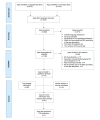CE Accreditation and Barriers to CE Marking of Pediatric Drug Calculators for Mobile Devices: Scoping Review and Qualitative Analysis
- PMID: 34898456
- PMCID: PMC8713103
- DOI: 10.2196/31333
CE Accreditation and Barriers to CE Marking of Pediatric Drug Calculators for Mobile Devices: Scoping Review and Qualitative Analysis
Abstract
Background: Pediatric drug calculators (PDCs) intended for clinical use qualify as medical devices under the Medical Device Directive and the Medical Device Regulation. The extent to which they comply with European standards on quality and safety is unknown.
Objective: This study determines the number of PDCs available as mobile apps for use in the Netherlands that bear a CE mark, and explore the factors influencing the CE marking of such devices among app developers.
Methods: A scoping review of Google Play Store and Apple App Store was conducted to identify PDCs available for download in the Netherlands. CE accreditation of the sampled apps was determined by consulting the app landing pages on app stores, by screening the United Kingdom Medicines and Healthcare products Regulatory Agency's online registry of medical devices, and by surveying app developers. The barriers to CE accreditation were also explored through a survey of app developers.
Results: Of 632 screened apps, 74 were eligible, including 60 pediatric drug dosage calculators and 14 infusion rate calculators. One app was CE marked. Of the 20 (34%) respondents to the survey, 8 considered their apps not to be medical devices based on their intent of use or functionality. Three developers had not aimed to make their app available for use in Europe. Other barriers that may explain the limited CE accreditation of sampled PDC apps included poor awareness of European regulations among developers and a lack of restrictions when placing PDCs in app stores.
Conclusions: The compliance of PDCs with European standards on medical devices is poor. This puts clinicians and their patients at risk of medical errors resulting from the largely unrestricted use of these apps.
Keywords: European regulations; app; application; drug dosage calculator; medical devices; medical errors; mobile health; pediatric; pharmacy; safety.
©Charlotte Koldeweij, Jonathan Clarke, Joppe Nijman, Calandra Feather, Saskia N de Wildt, Nicholas Appelbaum. Originally published in the Journal of Medical Internet Research (https://www.jmir.org), 13.12.2021.
Conflict of interest statement
Conflicts of Interest: The authors had no financial relationships with any organizations that might have an interest in the submitted work in the previous 3 years; and had no other relationships or activities that could appear to have influenced the submitted work. NA is director of Dosium Holdings Ltd, a software company developing computerized decision support tools for medication safety. SW is director of the Dutch Pediatric Formulary and is a paid consultant for AMPharma, Khondrion. SW receives research funding from the EU (IMI JU2) and the Bill & Melinda Gates Foundation. CF is a shareholder in Dosium Holdings Ltd. The study funders were not involved in the study design; in the collection, analysis, and interpretation of data; in the writing of the report; and in the decision to submit the article for publication. The lead author confirms the independence of the contributing researchers from funders and that all authors had full access to all of the data in the study and can take responsibility for the integrity of the data and the accuracy of the data analysis.
Figures
References
-
- Hadjipanayis A, Klonis A, Abdel-Mannan OA, Sutcliffe AG. Smartphone use in paediatric practice: a national survey. J Mob Technol Med. 2016 Mar;5(1):3–8. doi: 10.7309/jmtm.5.1.2. - DOI
-
- Ekker A, van Rest B. Medische apps, is certificeren nodig? [2013-06-21]. https://www.nictiz.nl/wp-content/uploads/2013/05/13005-Whitepaper-medisc... .
Publication types
MeSH terms
Substances
Grants and funding
LinkOut - more resources
Full Text Sources
Medical


